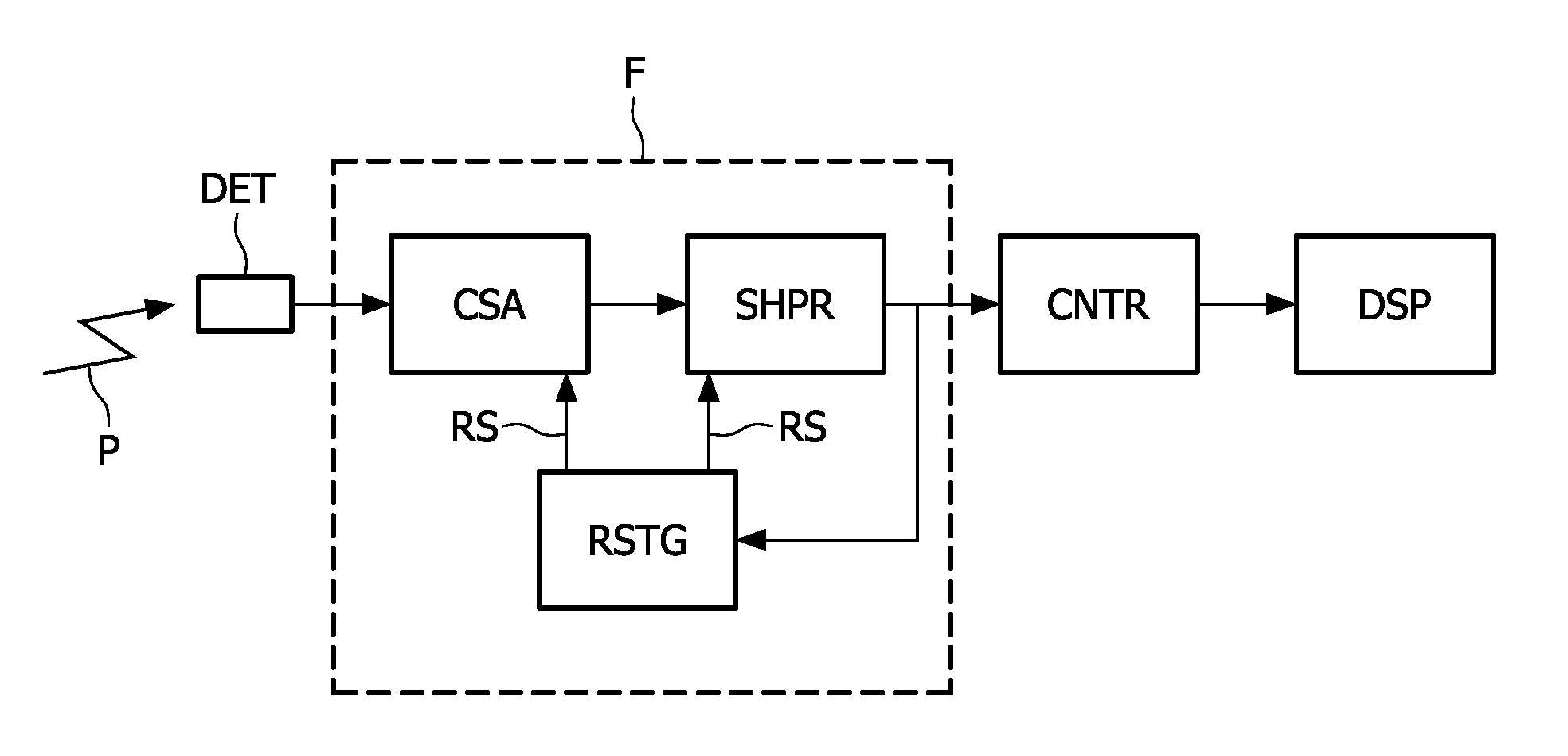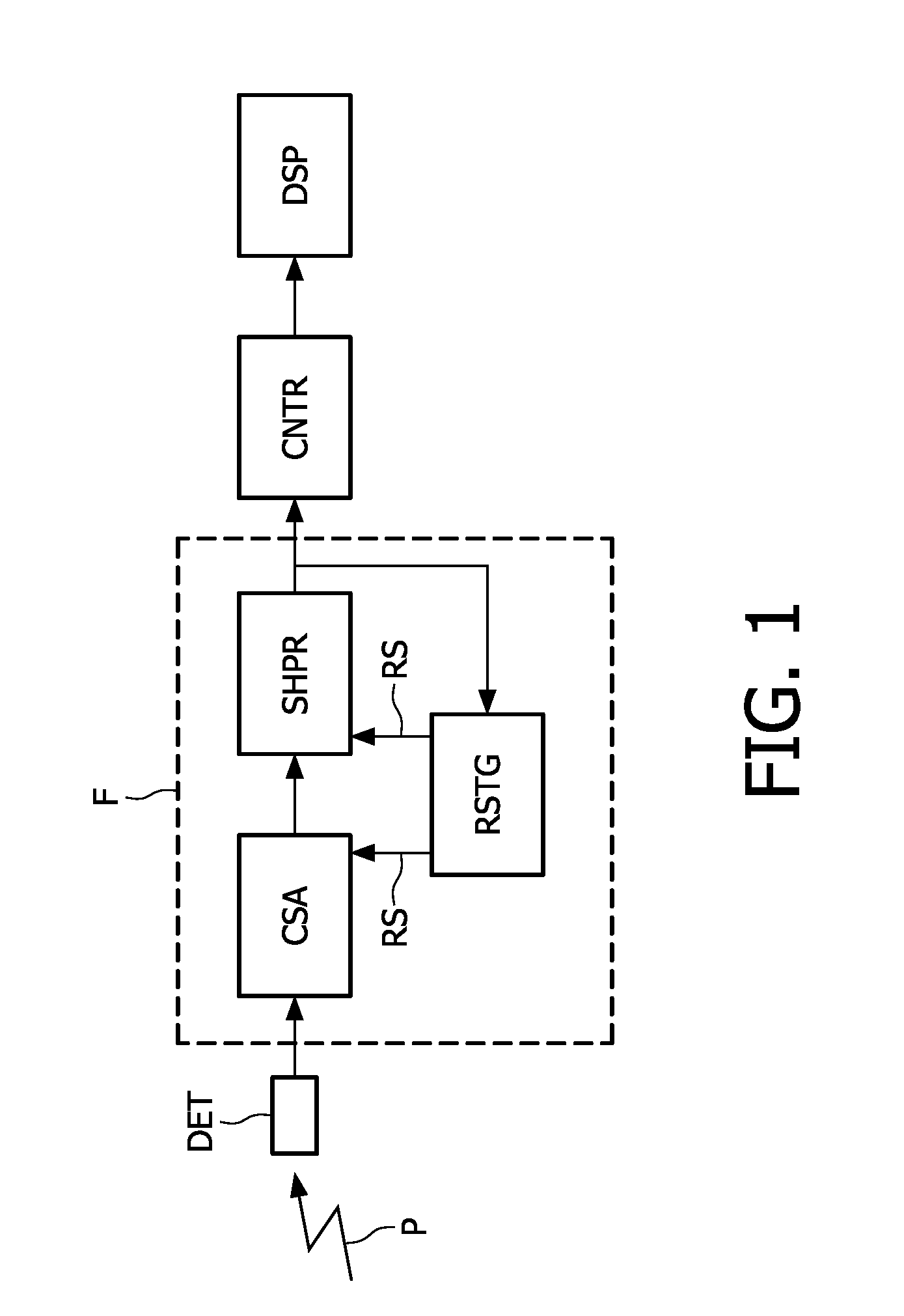Particle-counting apparatus with pulse shortening
a technology of pulse shortening and counting apparatus, which is applied in the field of particle counting, can solve the problems of large temporal extension, large width of the electric pulse provided by the detector, and maximum detection particle rate, and achieve the effect of high dynamic range and improved counting ra
- Summary
- Abstract
- Description
- Claims
- Application Information
AI Technical Summary
Benefits of technology
Problems solved by technology
Method used
Image
Examples
Embodiment Construction
[0036]FIG. 1 illustrates an embodiment of a particle-counting system, such as for use in a medical scanner. A particle or photon P (hereinafter referred to as ‘particle’ only) is captured by a detector DET. The detector generates an electric signal in response to the captured particle P, and this signal is applied to a particle-counting front-end F. The front-end F includes a charge-sensitive amplifier CSA that receives the electric signal from the detector DET. The charge-sensitive amplifier CSA has at least one integrator with a time constant associated therewith, such that the charge-sensitive amplifier CSA has a well-defined rise time and decay time. A shaper circuit SHPR receives the amplified signal from the charge-sensitive amplifier and generates a shaped signal in response thereto. The shaper SHPR also includes an integrator with a time constant associated therewith and may further include a switchable RC network with another time constant associated therewith. The shaped s...
PUM
 Login to View More
Login to View More Abstract
Description
Claims
Application Information
 Login to View More
Login to View More - R&D
- Intellectual Property
- Life Sciences
- Materials
- Tech Scout
- Unparalleled Data Quality
- Higher Quality Content
- 60% Fewer Hallucinations
Browse by: Latest US Patents, China's latest patents, Technical Efficacy Thesaurus, Application Domain, Technology Topic, Popular Technical Reports.
© 2025 PatSnap. All rights reserved.Legal|Privacy policy|Modern Slavery Act Transparency Statement|Sitemap|About US| Contact US: help@patsnap.com



